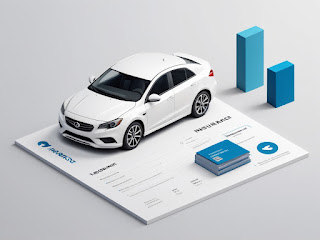Choosing the Best Car Insurance Deductible: Finding Your Sweet Spot
Choosing the right car insurance deductible is a critical decision that can affect both your premium costs and out-of-pocket expenses in the event of an accident or claim. This comprehensive guide explores the factors to consider when selecting a car insurance deductible, strategies for finding the optimal deductible amount, and the impact of deductible choices on your overall insurance coverage.
Understanding Car Insurance Deductibles
A car insurance deductible is the amount you agree to pay out-of-pocket before your insurance coverage kicks in to cover damages or losses resulting from an accident or covered incident. Deductibles can vary based on your insurance policy and coverage types, such as collision, comprehensive, and uninsured/underinsured motorist coverage.
Types of Car Insurance Deductibles
Collision Deductible: Applies to damage to your vehicle caused by a collision with another vehicle or object.
Comprehensive Deductible: Applies to damage to your vehicle from non-collision incidents, such as theft, vandalism, fire, or natural disasters.
Uninsured/Underinsured Motorist Deductible: Applies if you're involved in an accident with an uninsured or underinsured driver who is at fault.
Factors to Consider When Choosing a Car Insurance Deductible
Financial Situation: Evaluate how much you can afford to pay out-of-pocket in the event of an accident. Choosing a higher deductible can lower your premiums but may require you to pay more upfront if you file a claim.
Insurance Premiums: Higher deductibles typically result in lower insurance premiums because you're assuming more financial risk. However, consider whether the premium savings justify the increased deductible amount.
Vehicle Value: The value of your vehicle influences your deductible choice. Newer or more expensive vehicles may warrant lower deductibles to minimize out-of-pocket costs for repairs or replacement.
Risk Tolerance: Assess your tolerance for financial risk. A higher deductible means you'll need to pay more if you have an accident, while a lower deductible offers more immediate financial protection but may result in higher premiums.
Driving Habits: Consider your driving habits and likelihood of accidents. If you drive frequently or in high-risk areas, a lower deductible might provide peace of mind.
Strategies for Finding Your Optimal Deductible
Evaluate Cost-Benefit Ratio: Compare the potential savings in premiums with the additional out-of-pocket expense of a higher deductible. Use online insurance calculators or consult with an insurance agent to estimate the impact on your finances.
Consider Your Vehicle's Age and Condition: Older vehicles may benefit from higher deductibles since repair costs are typically lower. Newer vehicles or those with higher market values may justify lower deductibles to protect your investment.
Review Your Budget: Assess your monthly budget and emergency savings to determine how much you could comfortably pay if you need to file a claim. Balance this with the desire to minimize ongoing insurance costs.
Factor in State Requirements: Some states have minimum deductible requirements for certain types of coverage. Ensure your deductible choices comply with state regulations while meeting your financial needs.
Impact of Deductible Choices on Coverage
Higher Deductibles: Lower premiums but higher out-of-pocket costs when filing a claim. Suitable for drivers who prioritize saving on premiums and have sufficient savings to cover the deductible.
Lower Deductibles: Higher premiums but lower out-of-pocket costs if you need to file a claim. Provides greater financial protection upfront but may be costlier over time.
Variable Deductibles: Some insurers offer variable deductibles that decrease over time if you remain accident-free. This incentive rewards safe driving habits and can lead to lower long-term costs.
Reviewing and Adjusting Your Deductible
Annual Review: Periodically review your car insurance policy and deductible choices. Changes in your financial situation or vehicle value may warrant adjusting your deductible to better align with your current needs.
Consult with Your Insurance Agent: Discuss deductible options with your insurance agent to understand how different choices impact your coverage and premiums. Agents can provide personalized advice based on your specific circumstances.
Comparing Insurance Quotes: When renewing or shopping for car insurance, compare quotes from multiple insurers to find the best combination of coverage, deductibles, and premiums. Look beyond price alone to consider customer service, claims handling, and coverage options.
Conclusion
Choosing the best car insurance deductible involves balancing upfront costs with long-term financial protection. By evaluating your financial situation, driving habits, and vehicle needs, you can find the deductible "sweet spot" that meets your needs for affordability and peace of mind. Whether opting for a higher deductible to lower premiums or choosing a lower deductible for greater immediate protection, understanding the factors and strategies outlined in this guide empowers you to make informed decisions about your car insurance coverage. Regularly reviewing and adjusting your deductible ensures that your insurance policy remains aligned with your evolving needs and financial goals

Post a Comment for "Choosing the Best Car Insurance Deductible: Finding Your Sweet Spot"